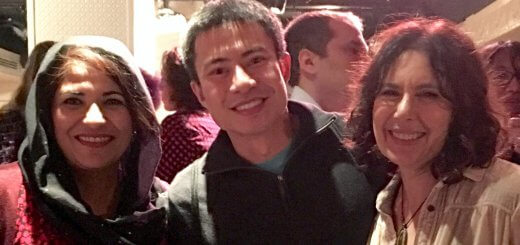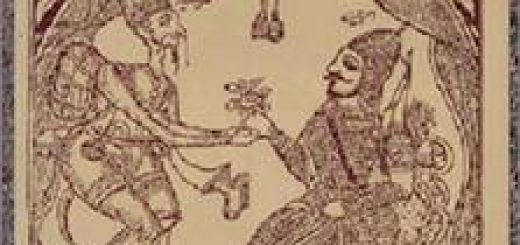A Physical Approach to Quantum Computing: By Taha Husnain Shah
A Physical Approach to Quantum Computing: By Taha Husnain Shah [Fsc , 1st year]
Introduction
The concept of Quantum computers was first proposed in 1981, when a genius searched for a portal to the quantum world. This man who the world knew as Richard Feynman realized the classical computers are not fast enough to process information of a quantum system.
With the first computer being developed almost eight decades ago, our lives were revolutionized forever. Since then, we have advanced quite a bit in a relatively short period of time. Even though our typical computers have undertaken feats that no human could ever accomplish, there still remains a set of problems that no classical computer can ever decipher.
For the resolution of such obstacles, computer experts and physicists are working together to manipulate quantum mechanics to harness its potential, which can only be attained by building a quantum computer.
Application of Quantum Computers
This new era of machinery will transform the digital world as we know it. With a promise of bright prospects in Chemistry, cryptography, medicine and data management and storage this technology will have profound impacts on the entire digital world.
2.1 QUANTUM SIMULATIONS:
Quantum computers are able to simulate quantum systems that can surge our understanding of perplexing quantum problems and the quantities involved which could not be done due to Heisenberg`s Uncertainty Principle.
This can have a ground-breaking impact in engineering at the quantum scale which can aid us to build tools with unprecedented accuracy and materials with better properties and more resistance.
They will also be able to simulate chemical reactions which may give the insights about conditions of bond formation and predictability of their properties. It includes formation of proteins and working of DNA, with potential applications in drug development.
2.2 QUANTUM KEY DISTRIBUTION (QKD):
Quantum computing could also crash the RSA systems, which is the most common public key-encryption technique.
Shor`s Algorithm by Peter Shor formulated an algorithm to calculate the encrypted key. It can also work on classical systems with a few constraints, but is exponentially faster on quantum Systems. This could change the fields of cyber security and cryptography as we know it.
Experts are also working on making post-quantum cryptography, which cannot be broken down by algorithms. The most popular procedure is Quantum-Key-Distribution (QKD).
2.3 OPTIMIZATION AND SAMPLING PROBLEMS:
Another thing Quantum computers are great for is checking all the combinations of many parameters interacting in a complex manner fulfilling the required criteria.
These problems take a long time on classical computers. This process is hundreds of millions of times faster by a quantum computer.
This signifies that properties of different compounds and chemicals being tested without actually having to manufacture them. This can be useful in discovery of compounds having exotic properties like superfluidity and superconductivity.
DIFFERENCE BETWEEN CLASSICAL AND QUANTUM COMPUTERS
Classical computers work fundamentally different than Quantum computers.
Classical ones have a binary system, they store everything in the form of 0`s and 1`s. The basic unit of information in classical systems called a bit. It is like a switch only being in a state of on or off, and nothing in between.
Quantum computers on the contrary, use Quantum bits or Qubits to process information. These Qubits can either hold a discrete value or exhibit a superposition of the possible values with different probabilities for each outcome. This allows them to be in many possible states at one time, exponentially increasing the computational speed.
BASIS OF QUANTUM COMPUTING:
4.1 SUPERPOSITION:
In Quantum world, the parameters of a quantum object can be represented in the form of waves with probabilistic amplitudes or wave function. Before a measurement, a quantum object like an electron occupies all the possible states, being in a superposition. This collapses into a classical system with definite parameters after a measurement.
Qubits are in a superposition with probabilities 0 and 1, which can be altered to get the desired result.
4.2 ENTANGLEMENT:
In quantum computing, qubits can be entangled with one another such that there is a correlation between them. It nullifies their individual probabilities and creates a probability distribution which shows the probabilities of different combinations. A change in the probability of one Qubit affects the probability distribution of entire system.
An infinite number of qubits can be entangled with each other.
Here the wave functions of all the entangled Qubits are added and an overall Quantum Wave Function is evolved.
4.3 INTERFERENCE:
During the evolution of the overall wave function, the probabilistic waves interfere either constructively to resonate the probability of a combination or destructively to eliminate a particular code.
APPROACHES TO QUANTUM COMPUTING:
Quantum computers have a versatile number of possible approaches. Many models of Quantum computers have been designed that are being implemented around the globe. Some of the popular models circulating around the globe include:
5.1 GATE MODEL:
Classical computers work by performing logical operations on bits to get a desired result. Same can be done by designing quantum algorithms to perform operations in quantum computing. However it is quite difficult as quantum systems are very delicate, making it difficult to get a large number of Qubits.
A number of logic and quantum gates are used that can collapse or restore superpositions, change the probability, entangle particles and perform many other quantum and logical functions.
With any n number of Qubits, the number of possible states becomes 2n.
5.2 QUANTUM ANNEALING:
Quantum annealing manoeuvres the law that all physical systems tend to stabilize themselves by staying at the lowest possible state.
The problem is set up as an energy distribution landscape. It uses the Hamiltonian operator (Uses energy level to describe a physical system) and Eigen spectrum (Sets up the energy landscape regarding the different possibilities) to calculate the lowest energy state which is the answer to the problem.
5.3 TOPOLOGICAL QUANTUM COMPUTING:
It is the most theoretical model of quantum computing.
Quasi-particles (Majorana Zero-mode quasi-particles) are initialized as qubits in two-dimensional anyons such that their world-lines curve around each other in braids of quantized energy gaps to form cooper pairs near absolute zero.
These braids are in a three-dimensional space-time and non-Abelian in nature. They are durable and require quantized energy to disturb, making them more reliable.
HOW CAN ONE CONTRIBUTE?
Believe it or not, this new applied science is made accessible for the general public, with an equal opportunity for you to contribute to, not only the research on Quantum Computers but the chance to even develop Quantum algorithms and run them on your device or on a real quantum computer. With online educational tools on sites like Qiskit by IBM, Cirq by Google, Q# by Microsoft and Ocean by D-wave, and a ton of quantum programming languages, it has become easier than ever to take part in this grand revolution.
Conclusion
This new technology has the power to completely restructure our civilisation and take us to unimaginable degree of prosperity and innovation. There is a likely chance that maybe one of its greatest applications is not evident yet.
With the biggest tech giants spending millions of dollars per annum on the development of these computers, each working with a different model, it is not clear which approach will be victorious at the end, but whoever it may be, it will truly be the pinnacle of human intelligence.














